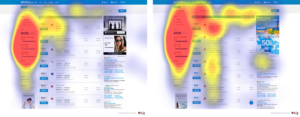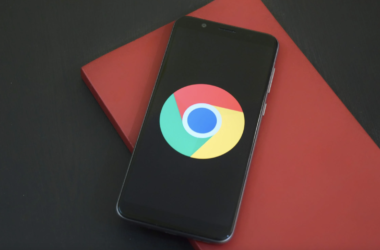You may think that choosing a colour to use on your website’s clickable links may not warrant your attention, but colour selection and colour psychology can produce a surprisingly significant impact on your site’s SEO.
Colours have the ability to elicit particular attitudes and emotions within us that may ultimately shape our behaviour. When we see a certain colour, say red for example, we automatically form associations between the red object and memories of situations where the colour was remembered. While you may not remember where you were or what you were doing, you may remember how happy, afraid or angry you felt. You may also recall your mum teaching you that red means stop and green means go. These unconscious and learned associations combine to shape our motivations.
So what does colour psychology have to do with SEO?
How you decide to implement colour on your website can affect your bounce rate and conversions. It’s important to consider possible associations that users may form based on the colour of buttons, headlines and pop-ups on your site. Research has suggested people reach their conclusion about a certain product within the first 90 seconds. Colour plays a huge part in forming first impressions and greatly influences consumer behaviour. Here are a few ways colour impacts our brand appraisals to help you leverage colour selection for your website.
Blue strengthens users’ trust
Multiple studies have shown the colour of a brand’s logo impacts upon the brand’s overall image to customers. Blue is often used by businesses as it exudes a sense of reliability and order. Both Paypal and Facebook draw upon these associations to build a trustworthy brand image. Trust is especially important for these companies, who rely on users to divulge personal information to them. Use blue on your site to ease any hesitations that new site visitors may have and motivate them to stay on your site.
Blue is a prominent colour on both PayPal (left) and Facebook’s (right) home pages.
Consider your audience when using red
The meanings we associate with certain colours ultimately arise from our culture, so the colour scheme you choose for your site should be mindful of your target audience. In particular, red has strikingly different cultural interpretations: a symbol of fortune and happiness in China, danger in various countries, and mourning in certain parts of Africa. Take a moment to consider your audience before using red to avoid any cultural faux pas and minimise your bounce rate.
Chinese online shopping site yhd.com (left) leverages the colour red to form positive associations with their products, while red is used for malware warning on Google Chrome (right).
Using white for negative space
Integrating white space into your site can be crucial to creating a sense of breathability for an easy-to-navigate user experience. The neutral background colour also helps direct attention to where you want it to go, whether that be a search box or the checkout button. However, using the colour should be carefully assessed when targeting Eastern cultures, as white denotes death in some of these regions.
Google provides a great example of how negative space has been included in homepage design (1998 and now).
Colour not only affects first impressions, but also usability
Aside from cultural association and symbolic meaning, colour selection is also a major component of search engine friendly web design. Designing for SEO not only concerns how you rank in web searches, but also how to optimise experiences for those who use search engines. It all boils down to providing the best foundation for users to navigate your site – and colour psychology has a lot to do with it.
‘Can I click on this?’
Ideally, this should not be a question for visitors to your site. When links are indistinguishable from other elements on a web page, users find it more difficult and time-consuming to complete a purchase or subscribe to a newsletter, and . Users’ click uncertainty may lead them to giving up before the task is complete. Wherever there is a link on your site, it should appear clickable to users – but this doesn’t necessarily mean it has to have a big ‘CLICK HERE’ next to it. By using consistent colours and formatting for any links, users are able to easily identify areas on the webpage that are links, which can lead to more time spent on your site clicking through relevant pages.
Research showing user gaze fixations are more focused when there are strong clickability signifiers (left). Improved clickability means users immediately know which elements of the site are interactive, and waste less time searching for ways to complete their desired task.
‘Un-aesthetic’ colours may actually help you convert
In an age no longer bound by a handful of web-safe colours, there is a reason that sites still use bright reds and yellows for their calls to action: it simply works. These bold colours – or colours with greater saturation – capture more attention and provide a sense of urgency than those that may be considered more aesthetically-pleasing, so if your goal is to convert, then ditching an all-pastel aesthetic for a big yellow button may be worthwhile.
The Guardian homepage using bring yellow against a dark blue background immediately attract user attention to their calls to action.
Black on white or white on black? It matters
Legibility is a vital component of the SEO process as users are more likely to engage with your site if they can easily read it. A study also found a positive correlation between readability and professionalism. Merely implementing contrasting colours for your site is not enough to optimise its visual appeal: the way elements are layered also plays a role. For example, while black and white offer the maximum colour contrast, black text on a white background has significantly higher legibility. As tempting as it may be to ring in the Christmas season with red text on a green background, a recent study has revealed this combination is actually the least readable text and background combination.
You can see firsthand how swapping the text and background colour impacts readability [source].
Final thoughts
Though the colours you choose for your website will not affect SEO directly, it is still important to consider how colour selection impacts the ways users interact with your site. Simply put, search engine algorithms do not have an innate preference for one colour over another, but they do look for good user experiences. Testing potential colour schemes for your site and monitoring traffic through Google Analytics can offer insight into the best colours for your business.
Watch SEO Sydney‘s quick videos for examples of how website design impacts SEO, as well as tips on optimising user experience design.











